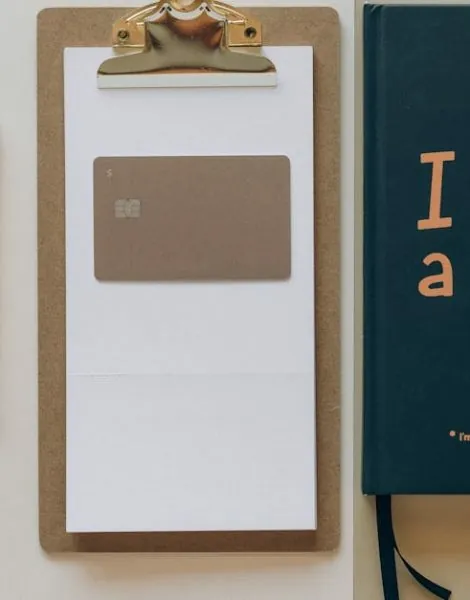In a world where financial chaos reigns supreme, bank account separation emerges as the superhero we didn’t know we needed. Picture this: one account for your bills, another for your splurges, and maybe a secret stash for that dream vacation. It’s like having a personal finance assistant who doesn’t judge your late-night pizza orders.
Table of Contents
ToggleUnderstanding Bank Account Separation
Bank account separation involves organizing finances by assigning specific accounts for distinct purposes. This method offers clarity and control over personal finances. For example, having one account for bills ensures that essential payments are prioritized. Another account for discretionary spending allows individuals to manage non-essential purchases more effectively.
Savings accounts can complement this system by providing a dedicated space for future goals, such as vacations or emergency funds. Implementing such a strategy aids in tracking expenses and understanding spending habits.
Many individuals find that separating accounts creates a clearer overview of their financial situation, leading to better decision-making. Creating accounts based on specific categories, like groceries or entertainment, simplifies budgeting. This method also reduces the likelihood of overspending in any given category.
Evaluating the different types of accounts helps optimize financial strategies. Checking accounts, savings accounts, and high-yield accounts each serve unique purposes. Utilizing them thoughtfully can enhance overall financial health.
Financial experts recommend reviewing account statements regularly to assess spending patterns. Monitoring accounts fosters accountability, reinforcing good financial habits. Prioritizing this separation can significantly reduce stress around personal finances, allowing individuals to focus on their financial goals.
Benefits of Bank Account Separation
Bank account separation offers significant advantages for managing finances. This approach fosters clarity and organization, leading to better financial outcomes.
Improved Budgeting
Establishing separate accounts simplifies budgeting. Assigning distinct accounts for fixed expenses, such as bills, and variable costs, like entertainment, promotes targeted spending. This method allows individuals to closely monitor their financial activities. Tracking spending becomes easier, as categorization reveals patterns and highlights areas for improvement. Budgeting tools integrated with bank accounts can provide real-time insights, aiding in strategic financial planning. Adopting this practice can reduce the likelihood of overspending, ensuring money aligns with priorities.
Enhanced Financial Security
Creating specialized accounts enhances financial security. Allocating funds for emergencies and savings builds a safety net, shielding from unexpected expenses. Separate accounts can deter impulsive spending by limiting access to discretionary funds. Regularly reviewing account balances encourages proactive financial management. This structure minimizes the risk of overdrafts, safeguarding credit scores. Establishing automation for bill payments through designated accounts fosters consistency in financial responsibilities. Prioritizing financial health through account separation leads to greater peace of mind.
How to Implement Bank Account Separation
Implementing bank account separation involves several steps focused on maximizing financial management and organization.
Choosing the Right Accounts
Select accounts based on financial goals. Checking accounts serve daily transactions, while savings accounts help build reserves. High-yield accounts provide interest earnings, benefiting long-term savings. Opening multiple accounts allows for clear allocation of expenses such as groceries, bills, and entertainment. Look for options with low fees; reduced costs enhance overall savings. Each account should prioritize distinct categories to simplify tracking and minimize confusion. Financial institutions may offer budgeting tools alongside accounts, adding convenience to management. Evaluate each account periodically to ensure alignment with evolving financial goals.
Setting Up a Budgeting System
Establish a detailed budgeting system next. Begin by outlining monthly income and expenses across various accounts. Use clear categories like fixed expenses, variable costs, and savings goals to organize financial activities. Tracking spending in real-time aids in staying accountable and adjusting as necessary. Integrate technology by utilizing budgeting apps or spreadsheets for easy monitoring. Setting spending limits within each account encourages disciplined financial habits. Review budgets monthly and adjust for any changes in income or expenses. Accomplishing regular evaluations fosters a solid grasp of financial health and supports informed decision-making.
Common Challenges in Bank Account Separation
Bank account separation can present several challenges that individuals must navigate. Two prominent issues are overcoming emotional attachments and managing multiple accounts.
Overcoming Emotional Attachments
Emotional connections to money can complicate bank account separation. Individuals might associate certain accounts with past experiences, making it difficult to reassess their financial strategies. Recognizing these feelings becomes crucial. Building a mindset focused on goals rather than sentiment allows for clearer financial decisions. Evaluating the purpose of each account, and reallocating funds accordingly, helps create a more purposeful financial structure. Fostering a pragmatic approach leads to better financial management and separation of emotions from financial decisions.
Managing Multiple Accounts
Managing multiple accounts can also pose logistical challenges. Simplifying tracking may seem daunting when overseeing several accounts. Organizing expenses by category proves beneficial in this scenario. Utilizing technology like banking apps makes monitoring easier and more efficient. Setting up alerts for various accounts promotes timely awareness of spending. Establishing clear goals for each account clarifies their purposes, ensuring individuals remain on target. Continuously reviewing account balances encourages accountability and simplifies the financial management journey.
Bank account separation offers a practical approach to personal finance management. By designating specific accounts for bills savings and discretionary spending individuals can gain greater control and clarity over their financial landscape. This method not only simplifies budgeting but also helps in tracking spending habits and identifying areas for improvement.
Establishing a clear financial structure minimizes the risk of overspending and enhances overall financial security. With the right tools and regular reviews individuals can foster accountability and build healthy financial habits. Ultimately prioritizing bank account separation can lead to reduced stress and a more focused pursuit of financial goals.









